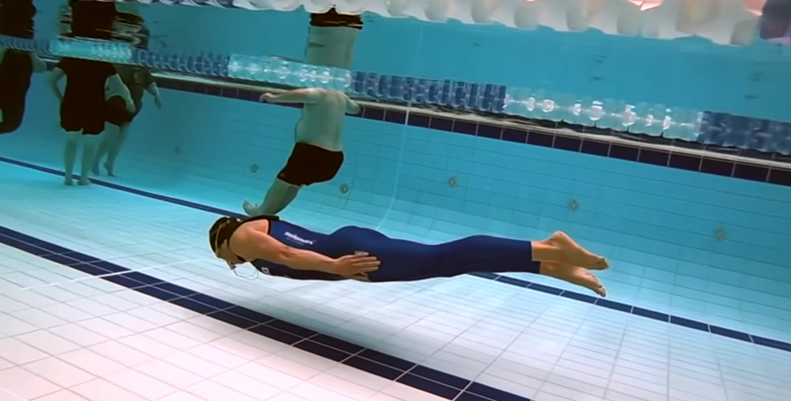Beginner’s Guide to Freediving Training
- James Cini

- Sep 16
- 3 min read
Freediving is an exciting and rewarding sport that allows you to explore the underwater world using only your breath. It combines physical fitness, mental focus, and a deep connection with nature. If you are interested in learning how to freedive safely and effectively, this guide will walk you through the essential steps to get started with freediving training.
Understanding the Basics of Starting Freediving Training
Before you dive into the water, it is important to understand what freediving entails. Freediving is the practice of diving underwater without the use of breathing apparatus, relying solely on holding your breath. This requires training your body and mind to adapt to the unique demands of breath-hold diving.
Some key concepts to grasp include:
Breath-hold techniques: Learning how to hold your breath longer and more comfortably.
Equalization: Techniques to balance pressure in your ears and sinuses as you descend.
Relaxation: Staying calm to conserve oxygen and reduce heart rate.
Safety protocols: Understanding buddy systems and emergency procedures.
Starting freediving training involves both theoretical knowledge and practical exercises. You will gradually build your lung capacity, improve your swimming skills, and develop confidence underwater.

Essential Equipment for Starting Freediving Training
Having the right equipment is crucial for a safe and enjoyable freediving experience.
Beginners should focus on acquiring gear that enhances comfort and safety without being overly complicated.
Here is a list of essential freediving equipment:
Mask and Snorkel: A low-volume mask helps reduce the amount of air needed to equalize. A simple snorkel allows you to breathe at the surface without lifting your head.
Fins: Long, flexible fins designed for freediving provide efficient propulsion with minimal effort.
Wetsuit: Depending on water temperature, a wetsuit keeps you warm and protects your skin. A suit for our conditions is typically a 5mm open cell wetsuit.
Weight Belt: Helps you achieve neutral buoyancy underwater. Rubber is best.
Dive Computer or Watch: Tracks your dive time and depth for safety.
Investing in quality gear tailored for freediving will make your training more effective and enjoyable. Remember, comfort and fit are key factors when choosing equipment.

How to Start Freediving Training Safely and Effectively
Safety is the top priority when starting freediving training. Here are practical steps to begin your journey:
Take a Course: Enroll in a certified freediving course to learn proper techniques and safety measures from professionals.
Practice Breath-Hold Exercises: Start with static apnea exercises on land to increase your breath-hold time gradually. Always practice under supervision.
Train Your Relaxation Skills: Use meditation and controlled breathing to calm your mind and body.
Use a Buddy System: Never freedive alone. Always have a trained partner watching you.
Progress Gradually: Increase your depth and duration slowly to avoid risks like shallow water blackout.
By following these guidelines, you will build a strong foundation for your freediving practice.
For those interested in structured guidance, beginner freediving training programs offer tailored instruction and support.

Training Techniques to Improve Breath-Hold and Diving Skills
Improving your breath-hold and diving skills requires consistent practice and specific training methods. Here are some effective techniques:
CO2 Tolerance Tables: Exercises that help your body adapt to higher carbon dioxide levels, reducing the urge to breathe.
O2 Deprivation Tables: Training to increase your body’s efficiency in using oxygen.
Dynamic Apnea: Swimming horizontally underwater on a single breath to build endurance.
Equalization Drills: Practicing different equalization methods like the Frenzel technique.
Cardiovascular Fitness: Engaging in aerobic exercises such as swimming, running, or cycling to improve overall lung capacity.
Incorporate these techniques into your routine gradually, and always prioritize safety by training with a partner or under supervision.
Mental Preparation and Mindset for Freediving Success
Freediving is as much a mental challenge as it is physical. Developing the right mindset can significantly enhance your performance and enjoyment.
Key mental strategies include:
Visualization: Imagine successful dives and calm underwater experiences.
Mindfulness: Stay present and aware of your body’s signals.
Stress Management: Learn to control anxiety and fear through breathing and relaxation.
Patience: Progress takes time; avoid rushing or pushing beyond your limits.
Confidence Building: Celebrate small achievements to boost your motivation.
Combining mental training with physical practice will help you become a more skilled and confident freediver.
Continuing Your Freediving Journey
Once you have mastered the basics, you can explore advanced freediving disciplines such as deep diving, spearfishing, or underwater photography. Joining a freediving community or club can provide support, motivation, and opportunities to dive in new locations.
Remember to keep safety at the forefront of your practice. Regularly refresh your knowledge, update your skills, and maintain your equipment.
Freediving is a lifelong adventure that offers unique experiences and a profound connection with the ocean. Start your training today and discover the wonders beneath the surface.




Comments